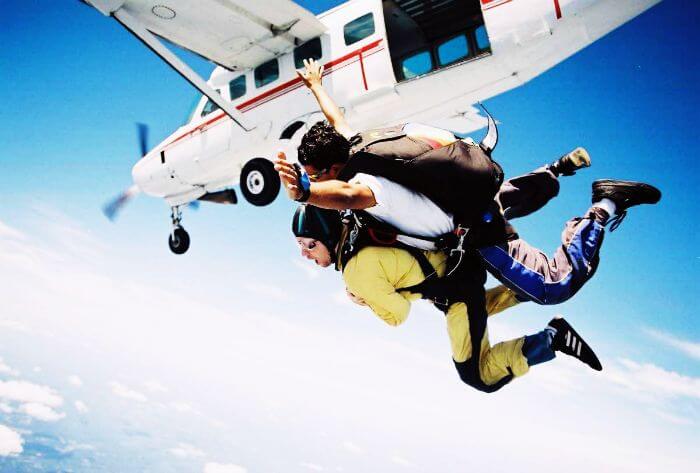Why Commercial Airlines don’t have Parachutes for Passengers?

Every nervous flyer makes sure to listen to the complete safety guidelines conveyed to the passengers before the take-off, even if they know it by heart by now, and check all the safety equipment provided by the airline. Amidst all these safety rituals, these nervous passengers cannot help but ponder over the absence of parachutes in commercial airlines. Well, to summarize, it is because jumping off with a parachute is as risky as staying aboard on a crashing commercial plane!
- Parachutes are tricky to operate and even the most basic jumpers require at least a four to five-hour training in order to grasp the technique of landing safely. Not to mention that safe landing is only ensured during the day time so, if your plane crash occurs during the night then the use of parachute would further add on to the chances of a casualty.
- Furthermore, the design of commercial airlines is highly incompatible with the use of parachutes in emergency situations. Such airplanes do not have special rear exits and hence there is a higher probability of hitting the tail or the wings of the plane if the normal exits are used to jump off.
- Most commercial planes fly at an altitude of 35,000 feet and the air at this height is as cold as -30 Fahrenheit with lesser concentration of oxygen. This proves to be an extremely hostile environment for the passengers to opt for parachutes during an emergency on the flight. An instant freezing of nose, eyes and mouth, loss of consciousness and expansion and consequent explosion of lungs will occur undoubtedly if parachutes are deployed from commercial planes.
Moreover, parachutes are extremely high maintenance objects, which need frequent scrutiny and repackaging. They are bulky, heavy and expensive hence using parachutes as safety equipment would ultimately result in increased airfares.